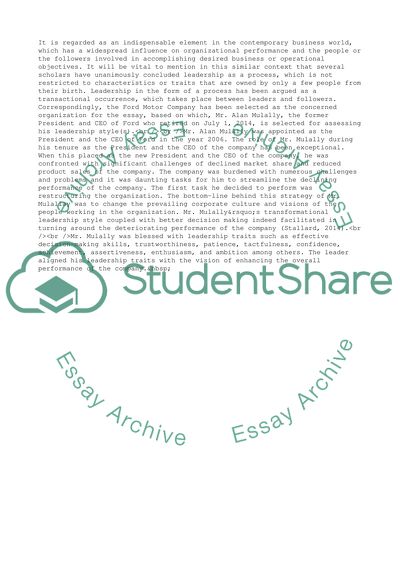Cite this document
(Leadership Assessment of CEO of Ford, Alan Mulally Coursework Example | Topics and Well Written Essays - 1500 words, n.d.)
Leadership Assessment of CEO of Ford, Alan Mulally Coursework Example | Topics and Well Written Essays - 1500 words. https://studentshare.org/management/1851199-leadership-assesstment
Leadership Assessment of CEO of Ford, Alan Mulally Coursework Example | Topics and Well Written Essays - 1500 words. https://studentshare.org/management/1851199-leadership-assesstment
(Leadership Assessment of CEO of Ford, Alan Mulally Coursework Example | Topics and Well Written Essays - 1500 Words)
Leadership Assessment of CEO of Ford, Alan Mulally Coursework Example | Topics and Well Written Essays - 1500 Words. https://studentshare.org/management/1851199-leadership-assesstment.
Leadership Assessment of CEO of Ford, Alan Mulally Coursework Example | Topics and Well Written Essays - 1500 Words. https://studentshare.org/management/1851199-leadership-assesstment.
“Leadership Assessment of CEO of Ford, Alan Mulally Coursework Example | Topics and Well Written Essays - 1500 Words”. https://studentshare.org/management/1851199-leadership-assesstment.


